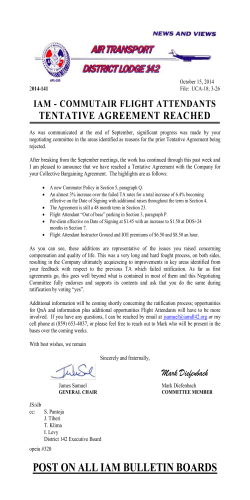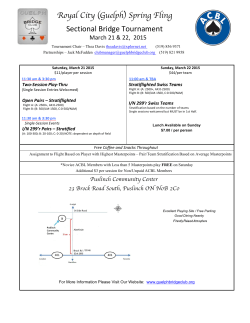
Kevin G. Bowcutt Senior Technical Fellow & Chief Scientist of
Kevin G. Bowcutt Senior Technical Fellow & Chief Scientist of Hypersonics The Boeing Company [email protected] Thursday, April 23, 2015 4:00 p.m. | 202 Reed McDonald Building Tackling the Extreme Challenges of Air-Breathing Hypersonic Vehicle Design, Technology, and Flight Abstract Efforts to develop technologies that will enable hypersonic flight have been ongoing since the late 1950’s. During this time substantial advancements have been made in hypersonic propulsion systems such as scramjets, high-temperature structural materials and thermal protection systems, and advanced vehicle design methods and tools. Taken together, these advancing technologies are moving mankind ever closer to achieving practical hypersonic flight. Over the last decade, emphasis has been placed on validating in flight the key technologies, design techniques, and design concepts for hypersonic vehicles. For example, in 2004 NASA successfully flight tested the world’s first airframe-integrated scramjet (X-43A), from 2010 to 2013 the USAF successfully flight tested the world’s first flight-weight and fuel-cooled scramjet (X-51A), and fundamental flight experiments are being conducted by the Hypersonic International Flight Research and Experimentation (HIFiRE) program. Maturing technologies to the point where hypersonic platforms are technically viable, and hypersonic flight economically affordable, will provide means to enable dramatically faster military mission execution and global transportation, and dramatically more affordable space transportation. This presentation will address the key technical aspects and challenges of hypersonic vehicle design, and will summarize progress made in maturing technologies critical to the successful development of practical hypersonic systems. The successful X -51A and HIFiRE flight test programs will be highlighted. The presentation will conclude by describing a vision for a hypersonic space and global transportation system. BIO Dr. Kevin G. Bowcutt is a Boeing Senior Technical Fellow and Chief Scientist of Hypersonics for The Boeing Company, with 32 years of experience. He is an AIAA Fellow, a Fellow of the Royal Aeronautical Society, and a member of the National Academy of Engineering. He holds BS, MS and PhD degrees in aerospace engineering from the University of Maryland. Dr. Bowcutt is an internationally recognized expert in hypersonic aerodynamics, propulsion integration, and vehicle design and optimization. Notable accomplishments include developing the modern viscous-optimized hypersonic waverider; serving in technical leadership roles on the National Aero-Space Plane program; leading a project to flight test scramjet engines by launching them from a light gas gun; originating the concept and optimizing the design of the USAF/DARPA X-51A scramjet-powered waverider vehicle; leading a team that designed an air-breathing reusable launch vehicle concept; and working on the Space Shuttle Columbia accident investigation simulating wing aero-thermal-structural failure. In the spring semester of 2007 Dr. Bowcutt was a visiting professor at Princeton University’s Mechanical and Aerospace Engineering Department where he taught a course in hypersonic aircraft design. Dr. Bowcutt currently leads Boeing’s efforts to develop and apply multidisciplinary design analysis and optimization (MDAO) methods to hypersonic vehicles; leads Boeing’s participation in the international HIFiRE hypersonic flight test program; and is leading the design of several advanced hypersonic vehicle concepts. Refreshments will be served at 3:45 p.m. Hosted by Dr. Rodney Bowersox
© Copyright 2025









